Read Reviews
The Best Knapsack Sprayers
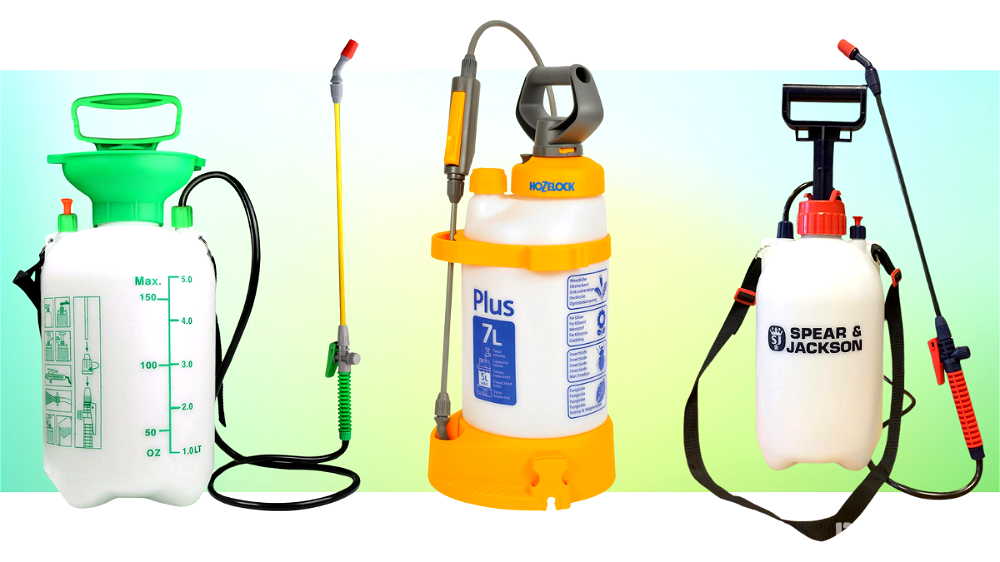
-
Best knapsack sprayer overall - Spear & Jackson Pump Action 5L Pressure Sprayer
-
Best lightweight sprayer - VOXON 5L Pump Action Garden Knapsack Sprayer
-
Best trigger design - Hozelock 7L Pressure Sprayer Plus
-
Best for large capacity - Faithfull 16L Pressure Sprayer
-
Best adjustable pressure - Matabi Supergreen 12L Knapsack Sprayer
Knapsack Sprayer Reviews
1. Spear & Jackson Pump Action 5L Pressure Sprayer
Best knapsack sprayer overall
- Container has a very solid build - all liquid is safely contained
- Simple to use with an air valve to release the pressure if needed
- The trigger can be locked for continuous spraying
- Needs just a few pumps every few minutes to maintain pressure
- The included lance may be too short for tall users
- The lance is made from plastic as opposed to metal so it's not quite as durable
- The spray nozzle can be a little stiff to adjust
- Plastic container can degrade if left in sunlight - best stored in the dark
- Capacity
- 5 L
- Weight
- 0.4 kg
- Shoulder Strap
- Yes
- No. of Nozzles
- 1
- Design
- 4.5
- Ease of Use
- 4.5
- Comfort
- 4.4
- Value for Money
- 4.7
Within this list there are some pricier garden sprayers, but it doesn’t always make sense to spend a lot of money if a cheaper option is all you need. As always, it depends what job you’re doing, but the Spear & Jackson Pump Action 5L Pressure Sprayer is a small, basic knapsack sprayer that will help apply herbicide, pesticide, water, and liquid fertiliser to the garden.
It’s a budget option, that’s true, but Spear & Jackson make some quality tools, and this is no different. The primary features work well, and the secondary areas are where costs have been kept down.
For example, the spray that is produced from the lance is powerful enough without being overly pressurised, and the adjustable nozzle can be twisted to produce a range of different spray patterns – whether you want to mist the humidity-loving plants in your garden, or apply cleaning solution to your patio. Therefore, in terms of primary functions, this garden sprayer is very effective.
With just a 5 L capacity, it’s one of the smaller garden sprayers here, and may not be the best sprayer for large spaces; however, its small size does help to keep the weight down.
This is perhaps just as well, as its biggest shortcoming is the strap provided – it comes with a single strap, instead of the backpack-style arrangement of some other knapsack sprayers. This can cause the tank can swing around, bumping your leg whilst in use.
That said, every cloud has a silver lining: in this case, the fact the sprayer is positioned at your side means you can pump it when necessary, in order to continue spraying, without having to take off the unit.
Overall, this isn’t a sprayer that can be used for jobs that require a lot of high pressure – it doesn’t produce a jet that will clean a car, for example. However, it’s one of the best knapsack sprayers on a budget, and it’s good for certain tasks. If you need to apply solutions over plants, or cleaning products to surfaces before giving them a scrub, it’s a useful tool to have around.
Did you find this review helpful?
2. VOXON 5L Pump Action Garden Knapsack Sprayer
Best lightweight sprayer
- A great lightweight option for smaller gardens
- Arrives pre-assembled so ready to use straight away
- A spare seal kit and o-rings are supplied
- Trigger lock means it's not necessary to constantly hold trigger down
- Level markings on the outside ensure perfect ratios each time
- It can be tricky to get the nozzle setting just right - with a very small difference between the fine mist and full needle
- The clip for storing the wand is fiddly
- The lance is quite short so may not be comfortable for taller users
- The spray function pressure is a little disappointing
- Capacity
- 5 L
- Weight
- 0.84 kg
- Shoulder Strap
- Yes
- No. of Nozzles
- 1
- Design
- 4.5
- Ease of Use
- 4.7
- Comfort
- 4.5
- Value for Money
- 4.6
For smaller gardens, the VOXON 5L Pump Action Garden Knapsack Sprayer has a good spray without requiring you to carry around a large, heavy tank.
Weighing under 1 kg when empty, it doesn’t exceed 6 kg even when filled with water. If you’re concerned about carrying heavier weights, or just want something that’s less effort, this is an option that’s suitable for the majority of gardeners.
It’s easy to pick up, and has a ‘backpack sprayer’ design with two adjustable straps which makes it even more manageable. Overall, this is one of the best knapsack sprayers if you want something that’s easy to support without being too heavy. Backpack sprayers are often very large, but this is a smaller size that still offers the convenience of two back straps rather than one shoulder strap.
Due to its size, this is a backpack sprayer that’s obviously best suited to small/medium gardens, but if you don’t want anything heavier you could also use it over larger spaces too – you’d just have to spend more time filling it so jobs would take longer.
Fortunately, VOXON have made the container of this backpack sprayer translucent, which at least means that time can be saved when mixing and diluting chemicals; this can be done directly into the container, using the level markings as a guide.
Talking of sprayer features, there’s also a built-in funnel as part of the design, to create a large filling mouth which avoids spilling water or chemicals over the side. This is a problem that can occur with other backpack sprayers. Not only does this reduce waste, it stops nearby plants and paving coming into contact with chemicals by accident.
Also, in order to prevent damage to the sprayer, it’s fitted with a pressure release valve so that you can’t overdo it on the pressurised vacuum.
The spray lance has an adjustable nozzle, which can be twisted to produce different spray patterns. It goes from a fine mist to a more concentrated spray. There’s also a trigger lock to allow for continuous spraying which can be easier on the hands.
As a cheaper, smaller model, it doesn’t hold pressure quite as well as some more expensive knapsack sprayers, so you’ll likely find that you need to take it off and pump it more often than you would with those models – especially if you want to maintain a more powerful spray.
Fortunately, it isn’t too difficult to take this backpack sprayer off in order to do this because it isn’t too heavy to pick up again; however, putting it on and taking it off will probably slow down some tasks.
To conclude, this is a good quality, manageable option for small/medium gardens. It’s the best backpack sprayer featured here if you want something with supportive double straps that isn’t as large as typical backpack sprayers.
Did you find this review helpful?
3. Hozelock 7L Pressure Sprayer Plus
Best trigger design
- Very simple to fill, empty and clean
- Trigger lock allows continuous spraying which allows you to work with minimal fatigue
- The spray pattern is simple to adjust and very effective
- All fittings and seals are solid and secure
- The lance supplied is a little short for targeting individual weeds without stooping down - taller users may need to purchase an extension lance
- The spray isn’t particularly powerful so best suited to lighter tasks
- Not easy to assemble, especially if you’ve never used a knapsack sprayer before
- Included strap is secure and safe, but not overly comfortable
- Capacity
- 7 L
- Weight
- 1.77 kg
- Shoulder Strap
- Yes
- No. of Nozzles
- 1
- Design
- 4.7
- Ease of Use
- 4.5
- Comfort
- 4.3
- Value for Money
- 4.4
Whether using a hose, lawnmower or pressure sprayer, having to keep the ‘on’ lever held down for extended periods is no joke – hand fatigue doesn’t take long to set in.
If this is something you’re all too aware of, one of the best things about the Hozelock 7L Pressure Sprayer is that it has a lockable trigger mechanism to enable continuous spraying
Whilst some motorised sprayers require you to constantly squeeze the spray trigger, this model gives your hands a bit of a rest making it a lot easier to use for longer jobs.
Of course, this ‘continuous use’ is limited to how long it takes before the tank needs refilling, but generally you can get at least 20 minutes from the 7 L container – this would certainly feel like a lifetime if you had to hold the lever down the whole time.
There are other pressure sprayers that seem to constantly leak air and reduce in pressure, but this Hozelock model stays pretty true to what you expect – 23 pumps can give 20 minutes spray time without requiring much (if any) additional pumping in between.
Made of thick plastic, it feels durable which is reassuring when potentially using garden chemicals like weed killers and pesticides. The container is also translucent, with measuring marks, so you can very easily dilute solutions and see how much liquid is left.
Weighing 1.77 kg when empty, the sprayer itself doesn’t add on too much weight, and there is an adjustable strap included as well – just another factor that helps it be easier to use for extended periods. Whilst this isn’t the most comfortable strap in the world, as it doesn’t have any padding, it does help distribute the weight and keep the sprayer secure, at least.
The spray itself is also very impressive. When used with the max pressure (23 pumps), the spraying water is powerful enough to wash windows and cars, with the same strength as a motorised pressure washer. You therefore need to get used to its power, and work out how many pumps best suit each job, to avoid jet washing the lawn when you’re trying to apply weed killer. To help with this, the adjustable cone nozzle can be twisted to change the force of the spray.
Overall, this is one of the best knapsack sprayers in terms of design; the trigger lock makes it relatively easy on the hands and it holds its pressure well. It’s a good mid-size model for carrying a decent amount of liquid without being too heavy and could be used effectively on a small to large garden.
Did you find this review helpful?
4. Faithfull 16L Pressure Sprayer
Best for large capacity
- There is very little dripping from the nozzle once the trigger is released so your other plants will be safe from weed killer
- Gives a quick and even coverage using both the single head and fan spray head
- Large filling mouth means filling to capacity doesn't take long
- Additional nozzles included make it suitable for a range of outdoor tasks
- Two straps help support this backpack sprayer and distribute the weight evenly
- When filled to capacity, this 16L pressure sprayer is very heavy. Smaller users may struggle to put it on without an extra pair of hands
- The nozzles need meticulous cleaning to prevent blockages
- While the straps are sturdy, they will dig into your shoulders if you aren’t wearing many layers
- Unless all screws are very well tightened, this knapsack sprayer will leak
- Capacity
- 16 L
- Weight
- 1.84 kg
- Shoulder Strap
- Yes
- No. of Nozzles
- 4
- Design
- 4.4
- Ease of Use
- 4.3
- Comfort
- 4.3
- Value for Money
- 4.4
Working in a big garden can be seriously slowed down by using the wrong-size tools. If you don’t want to keep stopping, the Faithfull 16L Pressure Sprayer is one of the best knapsack sprayers for use in larger spaces. It’s quite a lot bigger than other models featured here.
Of course, this large capacity sprayer brings with it some polarizing pros and cons: if you can manage the weight of the full sprayer, which can be mounted on your back with the backpack-style straps, it can really save time; however, if it’s too heavy, jobs are going to take longer.
That said, this backpack sprayer doesn’t have to be used to full capacity, so you could predominantly use it part-empty, and just have the option to fill it when necessary.
Due to its large size, one of the downsides to this 16L pressure sprayer is that it needs to be frequently pumped to maintain max pressure – it’s not possible just to pump at the start of the job and be away. Fortunately, this pumping can be done without removing the backpack sprayer, using one hand on the side pump lever whilst the other hand holds the lance.
Instead of only having one lance with an adjustable nozzle, as with some backpack sprayers, several nozzle attachments come included. These offer a range of spray patterns and can be used to efficiently spray weeds, flowerbeds, car hub-caps, or anything else you choose! The lance length is also sufficiently long enough to generally reduce stooping and protect the ol’ back from strain.
There’s also a trigger lock to allow for continuous spraying which is another factor that helps with comfort when using this sprayer.
The components are all made from tough plastic and are shatter proof and frost resistant – something that is good to know when working out where to store tools over winter.
One further thing to note: although the extra nozzles are undeniably useful, they need to be extremely well cleaned to avoid blockages – it seems the small openings catch debris easily.
Did you find this review helpful?
5. Matabi Supergreen 12L Knapsack Sprayer[ SAVE 13% ]
Best adjustable pressure
- Sufficiently comfortable to use even when filled to capacity
- The included lance is telescopic so it’s suitable for any height user
- Spare parts are easy to find
- Not prone to leaking which makes it suitable for applying herbicides/liquid fertiliser
- Meticulous cleaning is needed after every use to prolong its lifespan
- The carry straps are awkward to fit initially
- Not transparent so you won’t be able to see how much product you’ve put in it
- Assembly instructions aren’t easy to follow
- Can be adjusted for both right- and left-handed users
- Capacity
- 12 L
- Weight
- 3.16 kg
- Shoulder Strap
- Yes
- No. of Nozzles
- 4
- Design
- 4.4
- Ease of Use
- 4.5
- Comfort
- 4.5
- Value for Money
- 4
Being able to control the pressure on a knapsack sprayer can be difficult – often, there’s no way to regulate the output once it’s been ‘pumped’. This isn’t the case with the Matabi Supergreen 12L Knapsack Sprayer though, as this sprayer features a pressure regulator on the lance.
You can choose between an output of either 1.5 bars or 3 bars by turning a valve. This is especially useful for spraying with different products. For example, when using 1.5 bars the droplets are bigger, which is better for spraying herbicides as the droplets don’t catch in the wind and get on other plants. Using the 3-bars setting creates finer droplets, ideal for pesticides (or general light-misting jobs).
If the pressure drops below the desired setting, the backpack sprayer will cut out until it’s pumped again, which is much better for ensuring consistent droplet size throughout the whole job. It also has a pressure release valve that ensures you can’t overdo the pumping.
There is a telescopic wand lance attached to this knapsack sprayer which helps make it more suitable for users of different heights. The lance also has an adjustable nozzle which can be twisted to alter the flow of spraying water.
Overall, this garden sprayer has the second-largest capacity featured here, able to hold up to 12 L, and it weighs just 3.16 kg when empty. When filled, it weighs somewhere around 15 kg, but the straps work to distribute the weight evenly across the back. It’s a good size if you’ve got a larger garden, even if it’s not the most comfortable to wear for an extended period.
Unfortunately, you can’t see inside the container which means it isn’t possible to know exactly how much liquid is left, nor is it possible to accurately dilute garden chemicals directly inside the backpack sprayer itself – this has to be done separately which is a bit more time consuming.
Even so, this is one of the best backpack sprayers if you’re looking to ensure an even application of products, and it’s also particularly easy to manage thanks to its backpack-style design. The bigger size makes it suitable for use on medium/large gardens.
Did you find this review helpful?
Compare Product Features
Use the dropdown to sort the table by the feature you want to see.
Spear & Jackson Pump Action 5L Pressure Sprayer
- 4.5
- 5 L
- 0.4 kg
- Yes
- 1
VOXON 5L Pump Action Garden Knapsack Sprayer
- 4.6
- 5 L
- 0.84 kg
- Yes
- 1
Hozelock 7L Pressure Sprayer Plus
- 4.5
- 7 L
- 1.77 kg
- Yes
- 1
Faithfull 16L Pressure Sprayer
- 4.4
- 16 L
- 1.84 kg
- Yes
- 4
Matabi Supergreen 12L Knapsack Sprayer
- 4.4
- 12 L
- 3.16 kg
- Yes
- 4
How to Choose The Best Knapsack Sprayer
Anyone with a large garden will know how much of a full-time job it can be to effectively eliminate weeds and pests.
Hauling bottles and buckets of weed killer around with you is exhausting, and if your weed killer spills onto your plants, it may kill them too!
Using a manual pressure sprayer that can be slung over your back can be a real game-changer. The best knapsack sprayers will allow you to safely transport weed killer or fertiliser around whilst keeping your hands free.
If you’re thinking about buying a knapsack garden sprayer but aren’t sure what to look for, the following advice should help inform your decision.
Piston Pump vs Diaphragm Pump
When it comes to garden pressure sprayers, there are two types of ‘pump’ sprayer.
The two models can look relatively similar at first glance, but knowing the difference – and therefore knowing which one to choose – will make it easier to complete certain jobs.
Piston Sprayer
In a piston pump pressure sprayer, there is a tube connected to the bottom of the main tank. Within this tube, a piston goes up and down to create pressure. Some piston sprayers are capable of delivering around 60 psi pressure. High pressure is useful for applying liquid fertilisers and spray herbicides because the droplet size will be smaller and therefore spread more evenly.
Diaphragm Sprayer
With diaphragm sprayers, the pressure is created by a component pushing up and down on a flexible diaphragm. The droplets created by a diaphragm pump system are generally bigger than those from a piston sprayer because the pressure is slightly lower. Therefore, these can be useful to stop liquid products from blowing in the wind, but there is a danger that they will deliver products in too dense of a concentration.
The fine spray from a piston sprayer will probably be more appropriate when applying liquid fertilisers etc. in a standard garden.
Material and Durability
It’s essential that your garden sprayer is made from a durable material that won’t corrode when exposed to harsh chemicals.
Most knapsack sprayers are made from sturdy, hard-wearing plastic, and you should ensure that the hose, lance, fittings and seals are all made of good quality materials too.
No matter the quality of your pressure sprayer, it won’t last as long if you don’t wash it out well between uses. If you’re using any chemicals, such as weed killers, make sure that none of the solution is left in the tank after use – it could corrode the plastic over time.
If you plan on using your knapsack sprayer for a few years, it’s good practise to check that you can easily replace broken parts. Ultimately, this will save you money in the long run.
Keeping the garden sprayer out of direct sunlight, and away from the elements. will also help extend its life. Plastic will degrade quicker when exposed to UV, so it’s best to store items out of the sun. Similarly, even if the plastic is frost resistant, it’s a good idea to store the pressure sprayer in a shed or garage over winter to avoid unnecessary damage.
Choosing the Right Capacity
The size of garden sprayer you need will depend on what you hope to use it for.
Generally, a 5 L tank will be best for small areas. So, smaller gardens, patios, and standard driveways. A 5 L tank will also mean a lighter unit when full, which might be more suitable if you aren’t able to support heavy weight for a long period of time.
Of course, with a smaller tank capacity you will have to fill it more often if you plan to do larger jobs.
For large driveways or gardens that need a lot of care and maintenance, a garden sprayer with a larger tank will save you time as they won’t need refilling as frequently. Keep in mind that a larger tank will add a considerable amount of weight to the unit when full.
A 12 L knapsack sprayer can weigh in the region of 15 kg when full of water (given that the unit itself also weighs something to begin with).
Choosing the right capacity ultimately comes down to how large the area you want to treat is, and how much weight you can comfortably support.
In terms of task-completion time, you may find it more effective (and safer!) to have a smaller garden sprayer that you can move around with more easily, rather than a larger one.
Adjustable Straps and a Comfortable Design
Following on from the subject of sprayer weight, you’ll find it far easier to carry a full knapsack sprayer if it’s comfortable.
Adjustable shoulder straps are crucial for comfort when it comes to comfort. For smaller garden sprayers, (1 – 7 L) one strap should be sufficient. One strap will keep your hands free whilst being enough to comfortably support smaller sprayer.
However, a backpack sprayer, with two straps, will be more comfortable for a sprayer with a larger tank capacity. Backpack sprayers, with two adjustable shoulder straps, stay in place and make it much easier to carry large amounts of liquid. Two adjustable shoulder straps will stop the sprayer from getting in the way, and will distribute the heavier weight much more evenly than one strap.
Also, look for a sprayer with a trigger lock. This will stop you from needing to hold the trigger down the whole time in order to achieve continuous spraying, and therefore help prevent aching hands and blisters.
Lance Length and Different Spray Patterns
Finally, take a look at the length of the lance and hose.
If the pressure sprayer has a hose that’s too short, you will be stooping continuously whilst working. This will cause pain and may also slow tasks down because you’ll have to constantly stop and stretch.
Make a note of the lance length from the product description and measure this against yourself. If you have to bend so that this measurement reaches from the floor to your hand, you may find that the lance of the manual pressure sprayer will not be long enough for you.
The spray lance should have an adjustable cone nozzle so that you can choose a different spray pattern depending on the job you’re doing. At the very least, you’ll want a jet option and a spray option.
Some pressure sprayers come with various detachable nozzles, so you can use different ones for a wide range of tasks. For example, a two-headed nozzle will allow you to quickly cover more ground.
READ NEXT: The Best Winter Lawn Fertiliser
Knapsack Sprayer FAQs
To ensure you get the best out of your pressure sprayer you should:
- Clean it thoroughly after every use. This will remove potentially corrosive chemicals from the tank, hose and lance. You could consider buying special pump cleaners, or, alternatively, flush the unit through with clean water.
- Dry the sprayer before storing it – especially in winter. Even if the sprayer is frost resistant, frozen liquid inside the components may cause them to break.
- Lubricate the joints and seals can keep them from drying out and cracking. Always remember to check for leaks before filling your sprayer with chemicals.
- Make sure to store your knapsack sprayer in a sheltered area when not in use. Although many sprayers have frost resistant components, they may still be damaged by cold temperatures if left exposed.
It is best to use a knapsack pressure sprayer to spray weeds on a dry day when no rain is forecast. Rain can wash the weed killer away before it has a chance to work. You should also choose a day that is not windy to avoid the weed killer being blown onto adjacent areas and damaging other plants.
It is not recommended that you use the same pressure sprayer for both pesticides and weed killers. This is because, even with thorough cleaning, backpack sprayers may still contain traces of diluted herbicides. This could harm your plants if applied to them alongside pesticide. To be on the safe side, keep any garden tools for weed killers separate: use a specific sprayer for weed killer and don’t use it for anything else.
Start typing and press enter to search

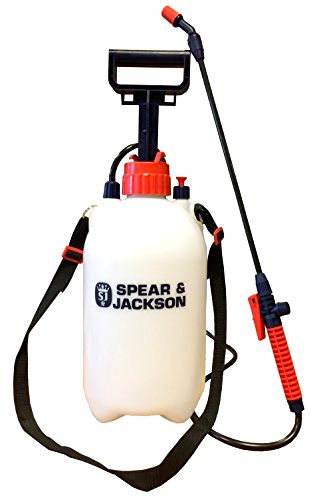
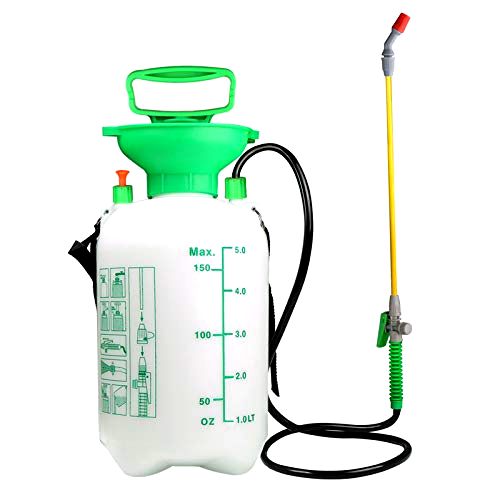
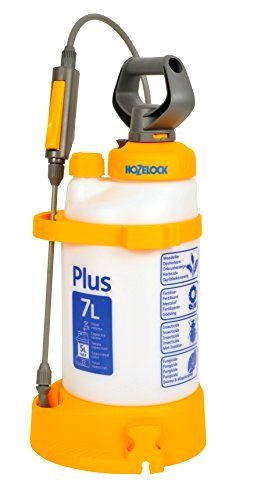
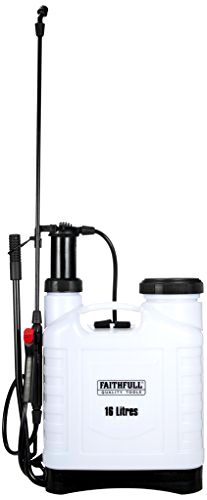
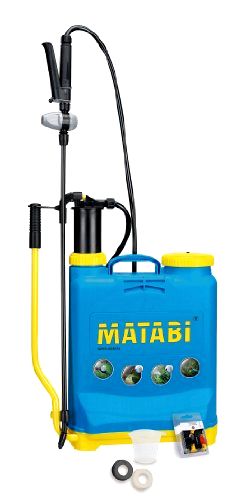
Share